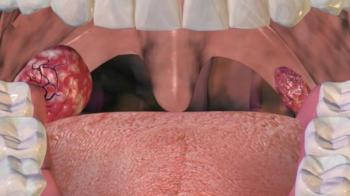
Adenoid , also known as adenoid , is the tissue mass resembling a bunch of grapes at the back of the nasal cavity. Nasal meats are also part of the immune system. In order for the adenoids not to be perceived as a problem, the Eustachian tubes that ventilate the ear should reach dimensions that will interrupt the air passage through the nose or close the mouth. Adenoid, which is one of the body's defense systems, can cause the child to get more infections. If the child has too much recurrent adenoid enlargement or adenoid inflammation, adenoid surgery is recommended under the supervision of a doctor. Adenoids, enlarged adenoids, obstructive sleep apnea and ear infections, namely otitis, can be found among the causes of adenoids.
There are some adenoid symptoms . These symptoms are as follows: Continuous mouth breathing due to difficulty in breathing through the nose, nasal speech, wheezing when breathing, snoring during sleep and holding your breath for a few seconds during sleep. Adenoid problems and symptoms are not understood for the first six months after birth. The disease can manifest itself when the child is between the ages of two and eight. These symptoms provide the understanding of the disease and facilitate the diagnosis.
There are ailments that can be caused by some adenoids . These are as follows: Hearing loss, snoring and respiratory arrest during sleep, otitis media, sinusitis, restless sleep, growth retardation, growth problems due to changes in growth hormone, facial deformities, loss of appetite, distraction, regular sleep. inability to sleep, hyperactivity and behavioral disorders in children, failure in school life, loss of fluid in the body and bad breath, tooth decay and nose bleeding due to mouth breathing.
Adenoid treatmentIt is usually done with surgery. However, sometimes there are cases where drug therapy is applied. Adenoid diagnosis is made using endoscopy, computed tomography and magnetic resonance imaging. The diagnosis is made on the basis of the symptoms detected by the family and the problems experienced by the child. First, the doctor may recommend a spray for adenoid enlargement, and the spray can be effective in reducing the adenoid. However, surgery is performed when the spray is not effective. In order to avoid a problem, it is recommended to perform surgery after the necessary controls are carried out. Adenoid treatment without losing time is very important for the health of the patient. Adenoid surgery is performed under general anesthesia. Adenoid surgery is completed in about twenty minutes.
After both the adenoid treatment and the surgery, the patient feels any pain. So the end of the treatment is not painful. The reason for this is that there is no nerve tissue in the nasal region that perceives the sensation of pain. The patient does not have any problems in swallowing after the surgery. Approximately six hours after the operation, the patient can be discharged and the patient can rest at home. The operated patient recovers after about a week or two. After the operation, the patient should pay attention to both eating and drinking. It is recommended to avoid eating very hard and very hot food. Drinking plenty of fluids is very important. If adenoid is taken, it is not possible to get sick frequently. It is also seen that they have less frequent complaints such as infection.